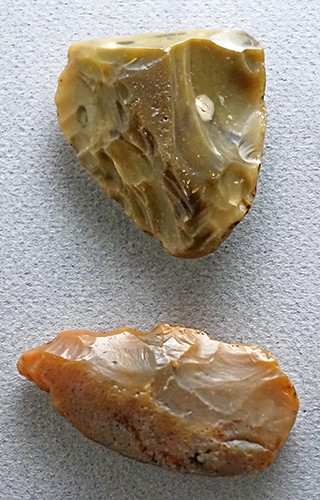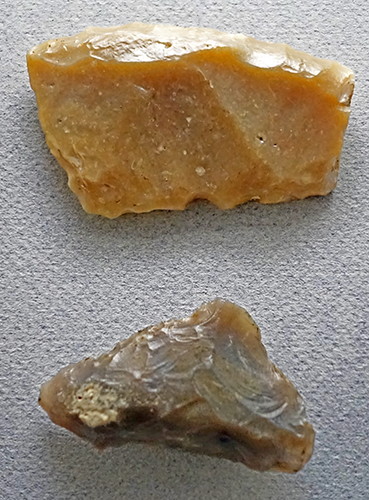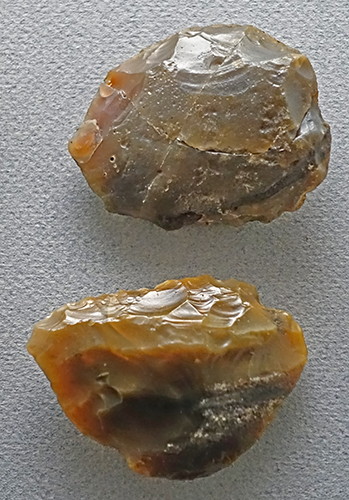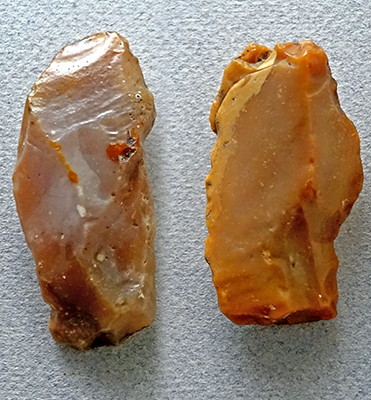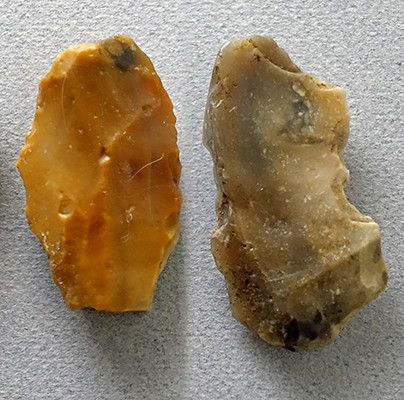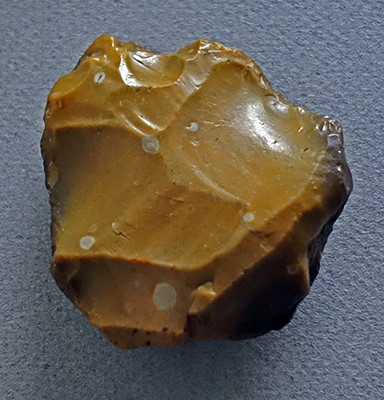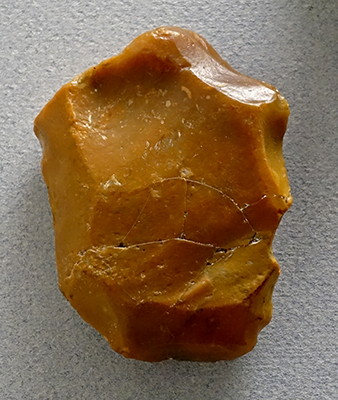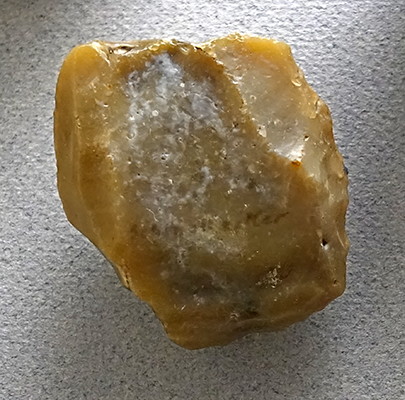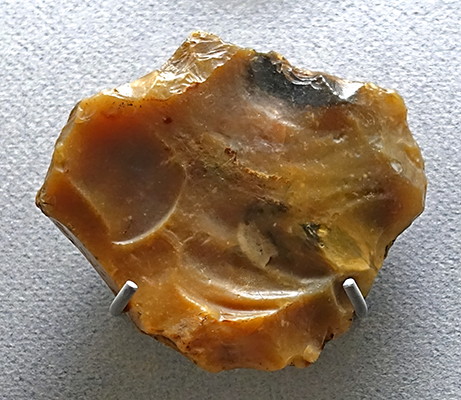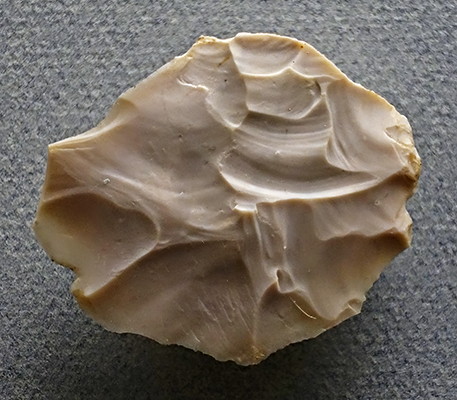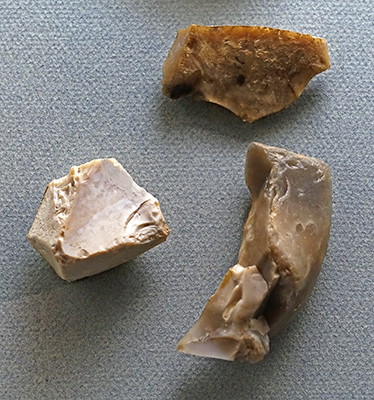Back to Don's Maps
 Back to Archaeological Sites
Back to Archaeological Sites
 Back to the review of hominins
Back to the review of hominins
The Neanderthals of Schleswig-Holstein
Part of the exhibition Hunters become farmers: Schleswig-Holstein on the way to the Neolithic at the Museum für Archäologie Schloss Gottorf
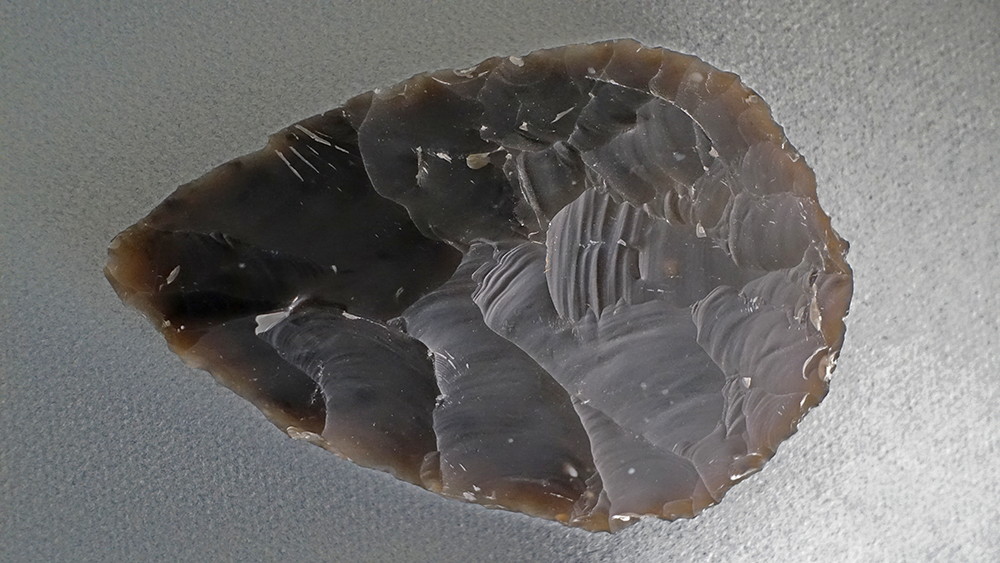
Hand axe, beautifully crafted and in excellent condition
Photo: Don Hitchcock 2018
Provenance: Not recorded.
Note that this is a modern reproduction created by Harm Paulsen, master flint knapper, credited below as one of the contributors to this exhibition. He has the consummate skills and vast experience from a lifetime devoted to archaeology to create this masterpiece, and the other superb flint axes on this page which have been listed here as having no provenance recorded. His skills are recognised by all, and he is the recipient of the 5th German Archaeological Award of the DGUF (2011). Readers may be interested in this tribute to him.
My thanks to Curtis Smith for this information.
Source: Museum für Archäologie Schloss Gottorf
Credits
A superb exhibition such as this depends on the people who put it together:
Scientific Responsibility: Jürgen Hoika, in collaboration with Klaus Bokelmann, Claus v. Carnap-Bornheim, Waller Dörfler, Pieter M. Grootes, Sönke Hartz, Dirk Heinrich, Helmut Kroll, Jutta Maurers-Balke, and lnge Sehröder
Exhibition Design: Hans-Joachim Mocka
Scenic design, models, replicas: Harm Paulsen
Graphic Design: Hans-Joachim Mocka, in collaboration with Atelier und Werkstatt Bokelmann, Flemming Bau, Reinhard Kühn, and Jörg Murawski
Digital Printing: CLC PrePress GmbH, Flansburg, EI Mundo, Süderbrarup
Photography: Claudia Franz, in collaboration with Mira Burgund and Sven Heinrich
Cinematography: Homann und Canham, Film · Ton · Installation, Hamburg
Catalogue, conservation, installation: Wulf-Dieter Freese, Ralner Hinriksen, Wolfgang Lage, Klaus Niendorf, Harm Paulsen, Otto Siebken, lnga Sommerfeld, Gerhard Stawlnoga, lngrid Ulbricht
In cooperation with: Christian-Albrechts-Universität zu Kiel, Institut für Ur- und Frühgeschichte, Institut für Haustierkunde, Institut für Anthropologie, Leibniz-Labor für Altersbestimmungen und Isotopenforschung, Institut für Ur- und Frühgeschichte der Universität zu Köln, Klaus-Peter Thom, Schleswig
With friendly support from: ARD-Studlo London, Dr. Joachim Wagner, Forstamt Schleswlg, Barnd Friedrichsdorf, Norddeutscher Rundfunk, ARD-Aktuall, Martina Hammerich, Hamburg, Staatliche Försterei ldstedt, Hans-Jürgen Malende, Gerd Walther, Fahrdorf-Loopstedt
Neanderthals in Schleswig-Holstein Before and During the Last Ice Age
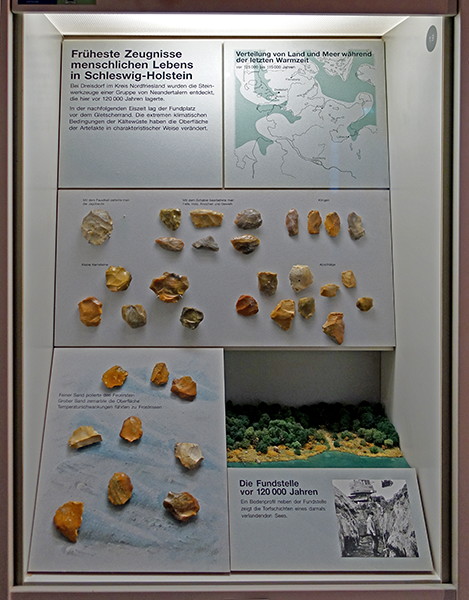
Earliest evidence of human life in Schleswig-Holstein.
At Drelsdorf in the district of Nordfriesland, the stone tools of a group of Neanderthals, who camped here 120 000 years ago, were discovered.
In the subsequent ice age, the site was located in front of the ice sheet edge. The extremely cold climatic conditions have changed the surface of the artefacts in a characteristic way, giving them a patina they would not otherwise have.
( I have shown this window in full, before zooming in on the items on display, since it demonstrates in particular the superb skills of preparation, presentation, artistry and the underlying scholarship evident throughout this exhibition. It is one of the best exhibitions I have seen - Don )
Photo: Don Hitchcock 2018
Source and text: Museum für Archäologie Schloss Gottorf

Distribution of land and sea during the last warm period, between 125 000 BP and 115 000 BP.
( note the position of Drelsdorf, on the shore line of a shallow inlet of the sea - Don )
Rephotography: Don Hitchcock 2018
Source and text: Museum für Archäologie Schloss Gottorf

Drelsdorf, circa 120 000 BP.
Hand axes were a universal tool, but were also used to cut up game.
Photo: Don Hitchcock 2018
Source and text: Original, Museum für Archäologie Schloss Gottorf
Drelsdorf, circa 120 000 BP.
The scraper was used to work on skins, wood, bones and antlers.
Photo: Don Hitchcock 2018
Source and text: Original, Museum für Archäologie Schloss Gottorf
Drelsdorf, circa 120 000 BP.
These were identified on the display as blades. Neanderthals did create blades, and made tools from them.
Photo: Don Hitchcock 2018
Source and text: Original, Museum für Archäologie Schloss Gottorf
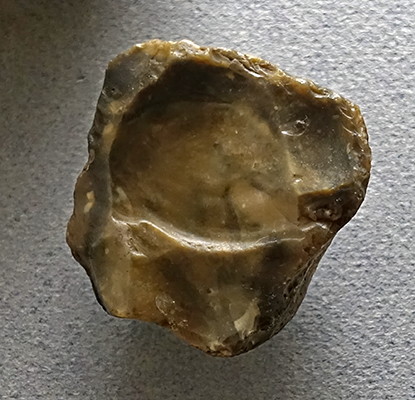
Drelsdorf, circa 120 000 BP.
Small cores or nuclei, the remains after as many flakes had been knapped from them as possible.
( these cores are very useful to determine the way in which tools were made - Don )
Photo: Don Hitchcock 2018
Source and text: Original, Museum für Archäologie Schloss Gottorf
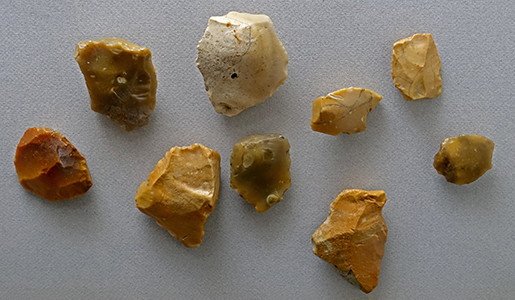
Drelsdorf, circa 120 000 BP.
Flakes.
( flakes were used for whatever task came to hand, as knives, scrapers, drills or burins for example - Don )
Photo: Don Hitchcock 2018
Source and text: Original, Museum für Archäologie Schloss Gottorf
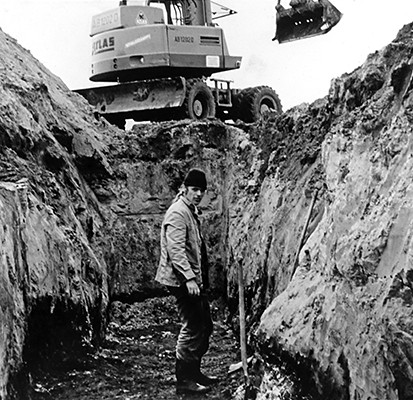
The neanderthal dig at Drelsdorf, which discovered artefacts from 120 000 years ago.
The soil profile shows the peat layers of a lake in the process of silting up.
Rephotography: Don Hitchcock 2018
Source and text: Museum für Archäologie Schloss Gottorf
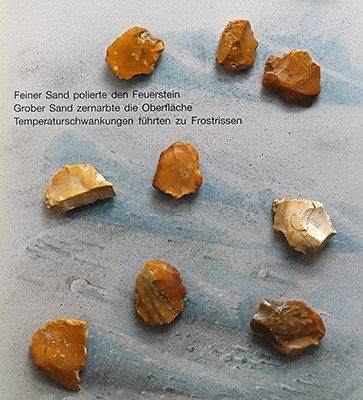
Drelsdorf, circa 120 000 BP.
Fine sand polished the flint.
Larger sand grains caked the surface.
Temperature fluctuations led to frost cracking.
Photography: Don Hitchcock 2018
Source and text: Original, Museum für Archäologie Schloss Gottorf
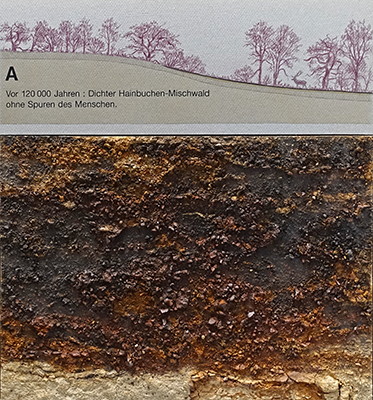
The environment of the Neanderthals.
A sand pit at Schalkholz, Kr. Dithmarschen gives an insight into the climate history at the time of Neanderthal man.
( note that the date of occupation by Neanderthals at this spot is 30 000 years later than that at Drelsdorf in the district of Nordfriesland, shown above - Don )
The dark humus layers were formed in a warm period (A) and two slightly cooler climates (B, C) at the beginning of the last ice age. In between there are cold periods of several thousand years.
Layer A: 120 000 years ago: Dense hornbeam mixed forest without traces of man.
Rephotography: Don Hitchcock 2018
Source and text: Museum für Archäologie Schloss Gottorf
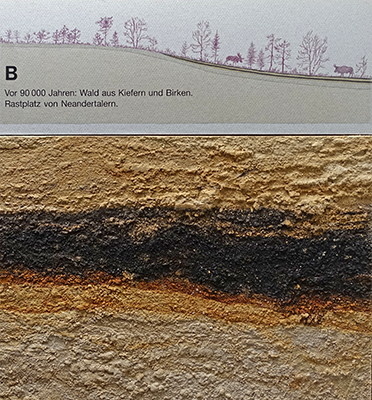
The environment of the Neanderthals.
Schalkholz, layer B: 90 000 years ago: A forest of pines and birches, visited by Neanderthal people.
In this dark layer were individual flint tools. They were quickly covered by sand and gravel layers and therefore look freshly knapped.
Rephotography: Don Hitchcock 2018
Source and text: Museum für Archäologie Schloss Gottorf
Schalkholz, circa 90 000 years ago.
These are some of the pristine condition tools found in Layer B.
Photo: Don Hitchcock 2018
Source and text: Original, Museum für Archäologie Schloss Gottorf
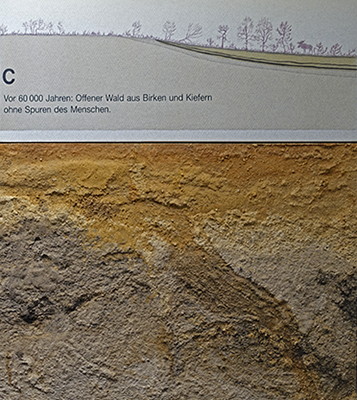
The environment of the Neanderthals.
Schalkholz, layer C: 60 000 years ago: open forest of birch and pine without traces of man.
Rephotography: Don Hitchcock 2018
Source and text: Museum für Archäologie Schloss Gottorf
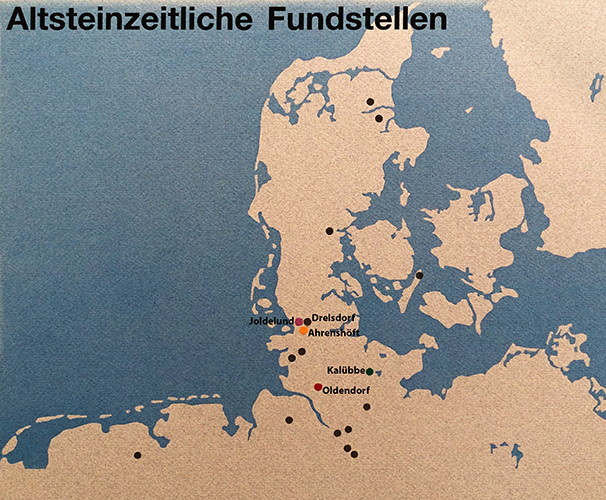
Sites from the Old Stone Age in or near the Schleswig-Holstein area.
Identified sites on this map include:
Ahrenshöft, Drelsdorf, Joldelund, Kalübbe, and Oldendorf.
Rephotography: Don Hitchcock 2018
Source and text: Museum für Archäologie Schloss Gottorf
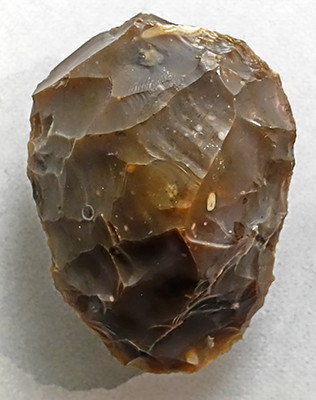

Left: Hand axe, from Joldelund.
Right: Tool made from a flake, Ahrenshöft.
Photo: Don Hitchcock 2018
Source and text: Original, Museum für Archäologie Schloss Gottorf
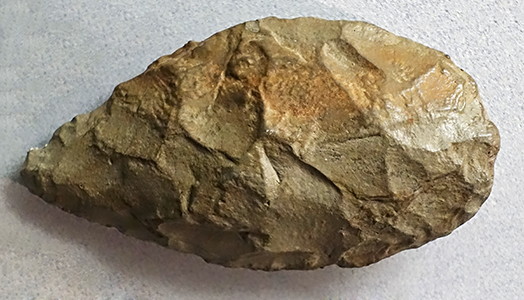
Hand axe, from Kalübbe.
Photo: Don Hitchcock 2018
Source and text: Original, Museum für Archäologie Schloss Gottorf
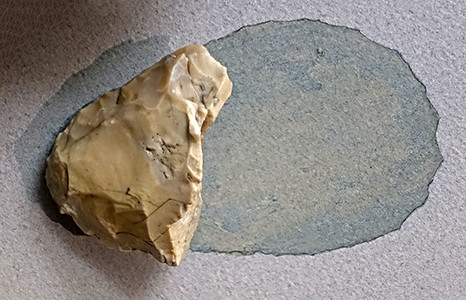
The remains of a hand axe, from Oldendorf. The suggested original outline of the axe may be seen from the well executed and artistic pen and watercolour outline.
Photo and text: Don Hitchcock 2018
Source: Original, Museum für Archäologie Schloss Gottorf
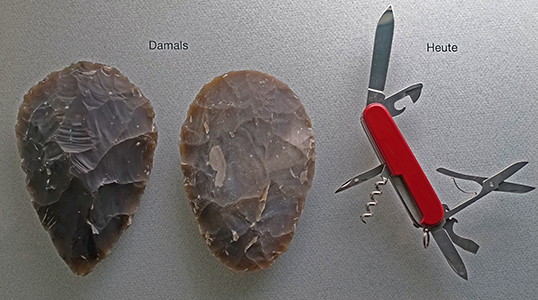
The Swiss Army Knife of the Palaeolithic.
For more than a million years, the hand axe was the most widely used universal device of man. The change in the form and technique of manufacture over the course of the millennia makes it possible to determine the age of these devices.
Photo: Don Hitchcock 2018
Modern reproductions by the master flint knapper Harm Paulsen.
My thanks to Curtis Smith for this information.
Source and text: Museum für Archäologie Schloss Gottorf
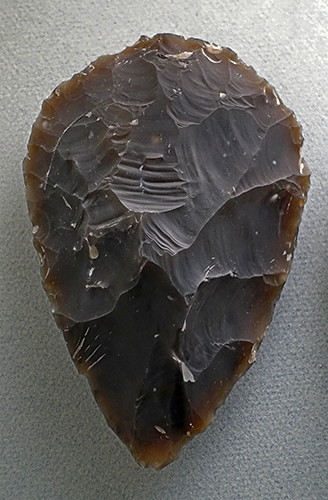
This is a superb example of a hand axe, made of high quality flint, and by a master craftsperson.
Photo and text: Don Hitchcock 2018
A modern reproduction by the master flint knapper Harm Paulsen.
My thanks to Curtis Smith for this information.
Source: Museum für Archäologie Schloss Gottorf
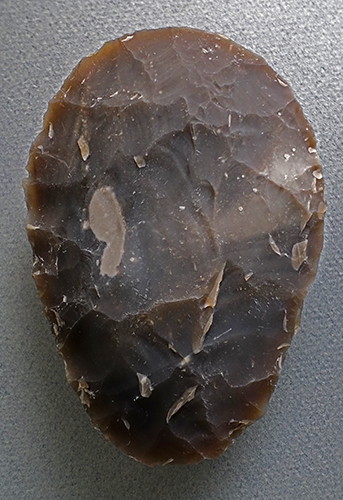
A highly symmetrical hand axe, with a uniformly thin and sharp edge, a modern reproduction of a typical Neanderthal hand axe.
Photo and text: Don Hitchcock 2018
A modern reproduction by the master flint knapper Harm Paulsen.
My thanks to Curtis Smith for this information.
Source: Museum für Archäologie Schloss Gottorf
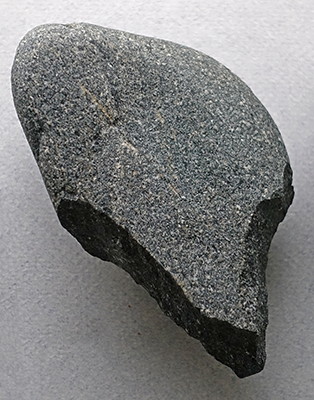
The first tools were much like this one. A piece of water worn river stone was picked up, and hit against a much larger rock in the river bed, and in a few minutes a very serviceable, sharp edged, hand held axe blade was created. A tool such as this could be used to gnaw at a sapling, and in a few minutes a pole could be broken off which could then be used for levering up a large rock to be used for some purpose, or the pole could be used, along with others, as part of a shelter.
The tool could also be used to cut into a carcass of a reindeer or aurochs, and chop out a useful cut of meat, to be tossed onto the coals for the evening meal. It could be used to crack open the leg bone of a horse to extract the fatty and nourishing marrow.
This was what we used for hundreds of thousands, perhaps millions of years. But eventually we wanted more useful and specialised tools.
When I need to pound in a tomato stake to use to support a newly planted tree, I often pick up one of the basalt rocks on my place lying near to hand, rather than going to the shed and getting out a steel hammer with a wooden handle. The rock does the job perfectly well. But if I am putting a nail into a piece of wood, a better tool is needed.
Photo and text: Don Hitchcock 2018
A modern reproduction by the master flint knapper Harm Paulsen.
My thanks to Curtis Smith for this information.
Source: Museum für Archäologie Schloss Gottorf
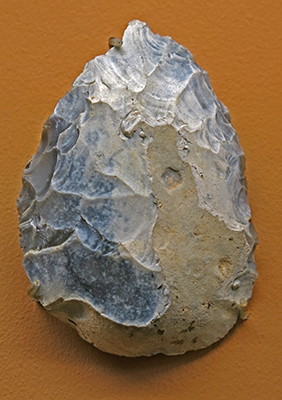
Acheulian biface on a flake from Saint-Acheul, France, circa 200 000 BP
Biface hand axes (often the name is truncated to just 'biface') became ubiquitous from circa 500 000 BP, valued for their ability to perform many functions.
Photo and text: Don Hitchcock 2015
Source: Original, Musée d'Archeologie Nationale et Domaine, St-Germain-en-Laye
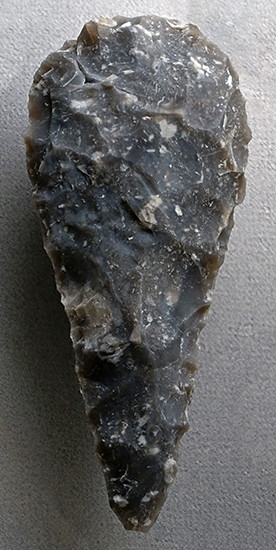
This is a beautiful example of a reproduction Micoquian culture hand axe, distinctively shaped. Hand axes went through a number of different styles, becoming steadily more skilfully and (usually) more symmetrically made.
However the Micoquian style had distinctly asymmetrical faces, when comparing one side to the other, while being symmetrical on any one face, as shown here.
Despite this, they were still being made at the eponymous site of la Micoque in the very late time frame of 80 000 BP - 50 000 BP, at about the time that Neanderthals and their distinctive tools were disappearing from the fossil record.
Photo and text: Don Hitchcock 2018
A modern reproduction by the master flint knapper Harm Paulsen.
My thanks to Curtis Smith for this information.
Source: Museum für Archäologie Schloss Gottorf
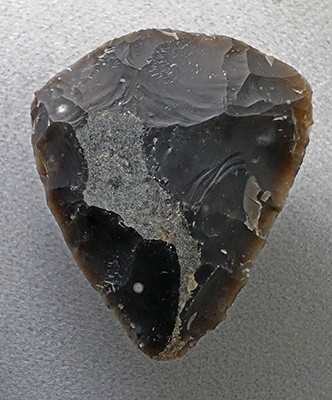
Another beautifully made hand axe. Millions of these were made.
Photo and text: Don Hitchcock 2018
A modern reproduction by the master flint knapper Harm Paulsen.
My thanks to Curtis Smith for this information.
Source: Museum für Archäologie Schloss Gottorf
References
- Niekus M., Barton R., Street M., Terberger Th., 2012: Neanderthal finds in Schleswig Holstein? Middle Palaeolithic flintscatters in Northern Germany, A mind set on flint. Studies in honour of Dick Stapert, Groningen Archaeological Studies 16, Barkhuis Publishing, Groningen: 93-105., 2012
